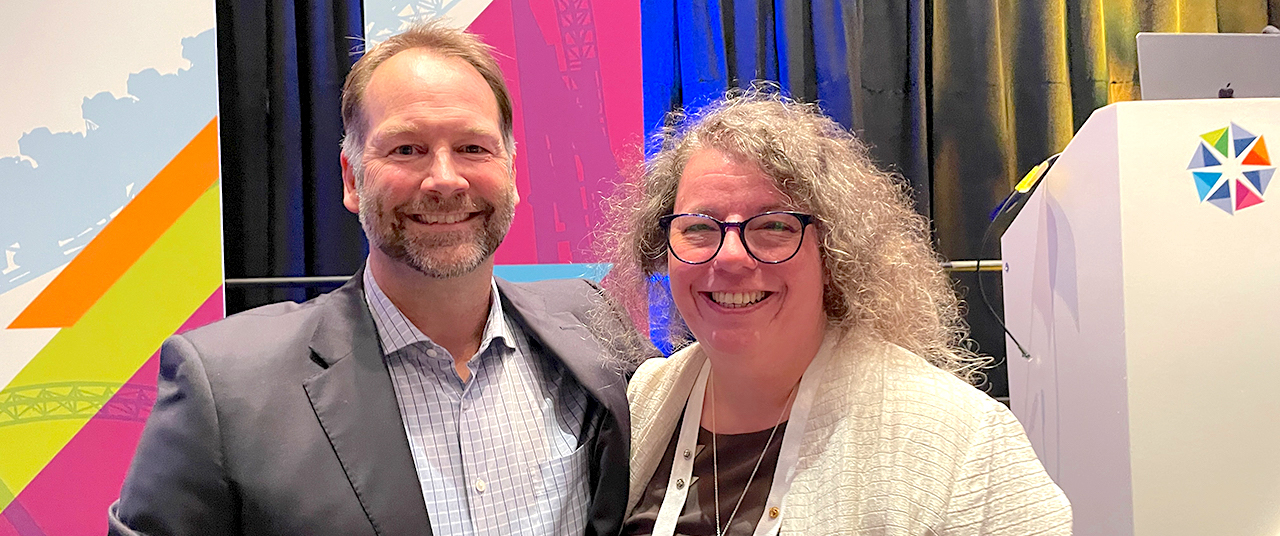It's not news anymore to tell you that the pandemic blew up the themed entertainment and attractions industry. But what if, from that all disruption, something better could arise? And what if it already has?
For the 10th edition of their Emerging Trends in Immersive Design panel at the annual IAAPA Expo in Orlando, Shawn McCoy and Cynthia Sharpe reviewed outstanding examples of museums, theme parks, and community organizations that found innovative ways to connect with their audience when Covid disrupted all the old ways of doing that.
"The barriers that we once thought were insurmountable, the silos that seemed immutable, the conversations that we were too scared or unwilling to have - that's all changing," said Sharpe, Principal of Cultural Attractions and Research for Thinkwell Group. "When everything was shoved off its axis, lots of things became up for grabs. The events of the past two years have swung the spotlight on to every corner of our industry, both the good and the bad."

"The theme that ties all these things together is blurring the lines," said McCoy, Vice President at JRA. "It's about blurring lines between digital and virtual and augmented and classic reality, between human and artificial intelligence. And between attractions and immersive food, beverage, retail, and modular experiences."
Among the projects that Theme Park Insider probably have heard of, Sharpe cited Universal's Super Nintendo World and Jurassic World VelociCoaster, as well as the opening and closing ceremony of this summer's Tokyo Olympics. McCoy also highlighted Universal Studios Florida's The Bourne Stuntacular, Walt Disney World's upcoming Star Wars Galactic Starcruiser, Phantasialand's Rookburgh, and the changes on Disney's Jungle Cruise ride.
But the real value of this presentation lies in discovering the less-promoted and sometimes more profound efforts made by museums and other institutions. Both McCoy and Sharpe cited Washington DC's Anacostia Community Museum for initiatives such as Feed the Fridge, which has raised more than $700,000 to pay local restaurants to provide more than 75,000 free meals to anyone who needs them, and Food for the People: Eating and Activism in Greater Washington, which Sharpe called "a fantastic next step forward in marrying an exhibition and a city-wide ARG," to educate people about the inequalities in the District's food system.
McCoy also cited some of the drive-through experiences that institutions developed in response to pandemic lockdowns, including the Minnesota State Fair food parade, Stranger Things - The Drive Into Experience, and the Boijmans Ahoy drive-thru museum in The Netherlands.
He also teased the proliferation of projection-based immersive Van Gogh experiences touring the world, citing five different productions.
Sharpe highlighted The Pharaohs' Golden Parade, a live stream event where 22 royal mummies were moved from the Egyptian Museum in Tahrir to the new National Museum of Egyptian Civilization. "It is wall-to-wall pageantry national narrative building, and it is outright amazing."
Among other innovations, Sharpe also cited new inclusive design at the Jewish Museum Frankfurt, a celebration of the contributions of LGBTQ+ women and gender minorities of color working in STEMM in the California Academy of Sciences' New Science: The Academy Exhibit, and the elevation of pop culture into museum spaces with Night Fever: Designing Club Culture.
"Radical inclusivity is a major trend," Sharpe said. "And it cuts across every aspect of what we all do, from master planning to disability access planning, to how we hire and retain, to what we design and who gets to design and build it."
"The last 18 months have been tough. Many of us have known people who've lost their livelihoods. Some of us know people who have lost their lives," McCoy said. "And for those of us who are fortunate to be here, to be healthy, to be doing what we love to do for a living, we need to do this time as an opportunity to change how we do things. To help our institutions, our attractions and our clients to be more connected, to be more communicative, more conscious, more convenient, and more creative. We can do better. Scratch that - we have to do better. We owe it to our clients. We owe it to our audiences, and we owe it to ourselves."
To that end, Sharpe ended the session with a truly profound interactive exercise. On each of the hundreds of seats in the Orange County Convention Center meeting room, Sharpe's colleagues had placed a folded paper that audience members were instructed to open at the end of the presentation. Each paper included a resume from someone who had lost their job in the industry or not been able to come to IAAPA to network.
"I'm not asking you to give them a job," Sharpe said. "Give them 15 minutes of your time, answer questions, connect them."
* * *
Want to keep the industry news coming throughout the year? Sign up for our free, three-times-a-week email newsletter and you can support Theme Park Insider without having to wade through the madness of all those social media feeds.
This article has been archived and is no longer accepting comments.